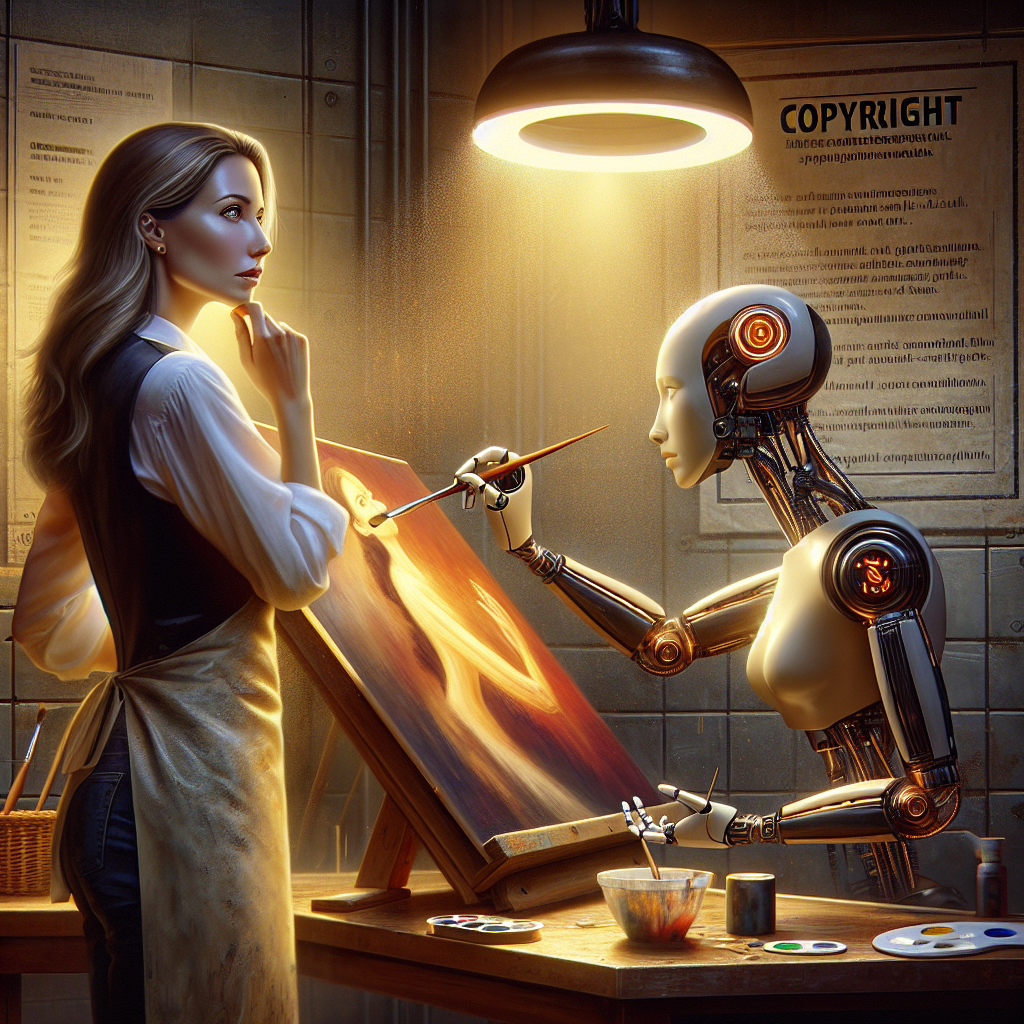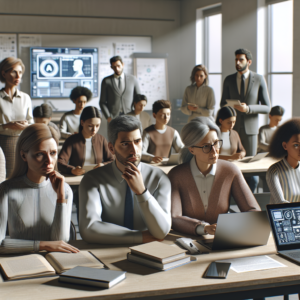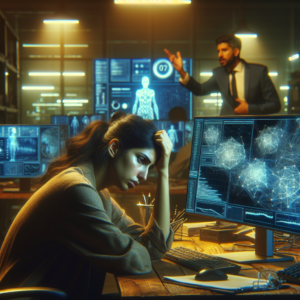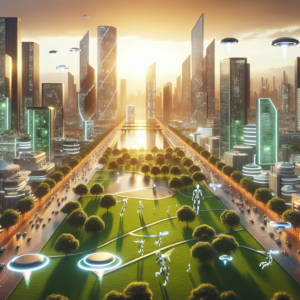Copyright Battles Loom Over Artists and AI
In the digital age, the intersection of artificial intelligence (AI) and creativity is revolutionizing the way art is produced and consumed. As machines become increasingly capable of creating complex works of art, writers, musicians, and visual artists are left grappling with a pressing question: who owns the rights to art produced by AI? The rising tension between traditional copyright laws and innovative technology is leading to a series of legal battles that threaten to reshape the artistic landscape as we know it.
The Rise of AI in Creative Industries
The incorporation of AI in creative fields is not a passing trend but rather a profound evolution. From generative art that uses algorithms to create visual pieces to AI-driven music composition tools, these technologies are making waves across various creative sectors. Artists now have access to sophisticated tools that can enhance their work, automate repetitive tasks, and even inspire new forms of expression.
One of the most notable examples of AI in art is OpenAI’s DALL-E, which generates images based on textual descriptions. Such tools not only challenge the conventional boundaries of artistic creation but also raise questions about the nature of authorship. When an artwork is created by an AI, who is the true creator—the machine, the programmer, or the end-user who inputs the commands?
The Legal Landscape of Copyright in the Age of AI
Copyright law has historically been designed to protect the rights of human creators. The U.S. Copyright Office states that copyright protection is available only for “original works of authorship” that are “fixed in a tangible medium of expression.” This definition raises an important question: Can AI-generated works be deemed “original,” and if so, who holds the copyright?
Currently, many jurisdictions do not recognize AI as a legal author. In fact, the U.S. Copyright Office has rejected registration applications for works created solely by AI, emphasizing the requirement of human authorship. This leaves many creators in a precarious situation, especially as AI-generated art becomes more prevalent and commercially viable.
Implications for Artists
As AI continues to evolve, artists and creators are left to navigate a complicated legal terrain. For many, the rise of AI tools can be seen as both a threat and an opportunity. The potential for AI to emulate artistic styles and generate new content could undermine the authenticity of human-created art. In contrast, it may also inspire traditional artists to adapt and incorporate AI into their creative processes.
Several key implications arise for artists in light of these developments:
1. Erosion of Traditional Copyright Protections
As AI-generated works proliferate, the risk of copyright infringement increases. Artists may find their styles and techniques mimicked or reproduced by AI tools without their consent, potentially diluting their brand and reducing their market value. This could lead to a greater need for artists to protect their work through alternative means, such as trademarks or new licensing agreements.
2. New Opportunities for Collaboration
Despite the challenges, AI can also serve as a powerful collaborator for artists. By using AI to generate initial concepts or to explore variations of a theme, artists can push the boundaries of their creativity. This collaborative potential raises intriguing questions about authorship and the definition of creativity itself.
3. Potential for Legal Reforms
As the debate around AI’s role in creative industries evolves, there may be a push for legal reforms that better address the realities of AI-generated content. Policymakers may need to consider new frameworks that define ownership rights, usage, and attribution for works created with the assistance of AI.
Case Studies in Copyright Conflicts
Several high-profile legal battles have already emerged as artists, tech companies, and legal experts seek clarity on the ownership of AI-generated works. These cases illustrate the complexities involved in determining authorship and copyright protections in an AI-driven world.
1. The Case of “Edmond de Belamy”
In 2018, an AI-generated portrait titled “Edmond de Belamy” made headlines when it was auctioned for $432,500 at Christie’s. The artwork was created by a Paris-based collective called Obvious using a machine-learning algorithm. This sale sparked a debate about the authenticity of AI-generated art and raised questions about copyright ownership. While Obvious claimed the work was their creation, traditional artists argued that the AI’s output was merely a reflection of the data it was trained on.
2. The “DeepArt” Controversy
DeepArt is an AI platform that allows users to transform their photos into artwork using various artistic styles. However, the platform faced backlash from artists who claimed their works were being used without permission. This controversy highlighted the need for clearer guidelines surrounding AI tools that leverage existing art to create new pieces.
Looking Ahead: The Future of Copyright in the AI Era
The rapid advancement of AI technology will undoubtedly continue to challenge existing copyright frameworks. As the industry evolves, it becomes increasingly crucial for policymakers, artists, and tech companies to engage in an open dialogue regarding the implications of AI-generated content.
Key considerations moving forward include:
1. Developing a New Paradigm for Ownership
There is a strong need for a new paradigm that recognizes the unique aspects of AI-generated works. This could involve establishing a tiered copyright system where creators of AI algorithms and the end-users who direct their use are entitled to share ownership rights.
2. Promoting Ethical AI Practices
As more artists integrate AI into their work, it is essential to promote ethical AI practices. This includes ensuring transparency in how AI-generated works are produced, as well as fostering guidelines for fair use and attribution.
3. Education and Awareness
Education about the implications of AI in creative industries is vital. Artists, legal professionals, and tech developers must work together to foster awareness of copyright laws, licensing agreements, and the ethical considerations of AI’s role in art.
Conclusion
As AI technology continues to advance, the intersection of creativity and artificial intelligence presents both immense opportunities and significant challenges. The copyright battles looming over artists and AI serve as a reminder of the need for a thoughtful approach to ownership and authorship in the digital age. By engaging in meaningful discussions and embracing innovative solutions, we can work toward a future where human creativity and AI coexist harmoniously, fostering a vibrant artistic landscape for generations to come.



